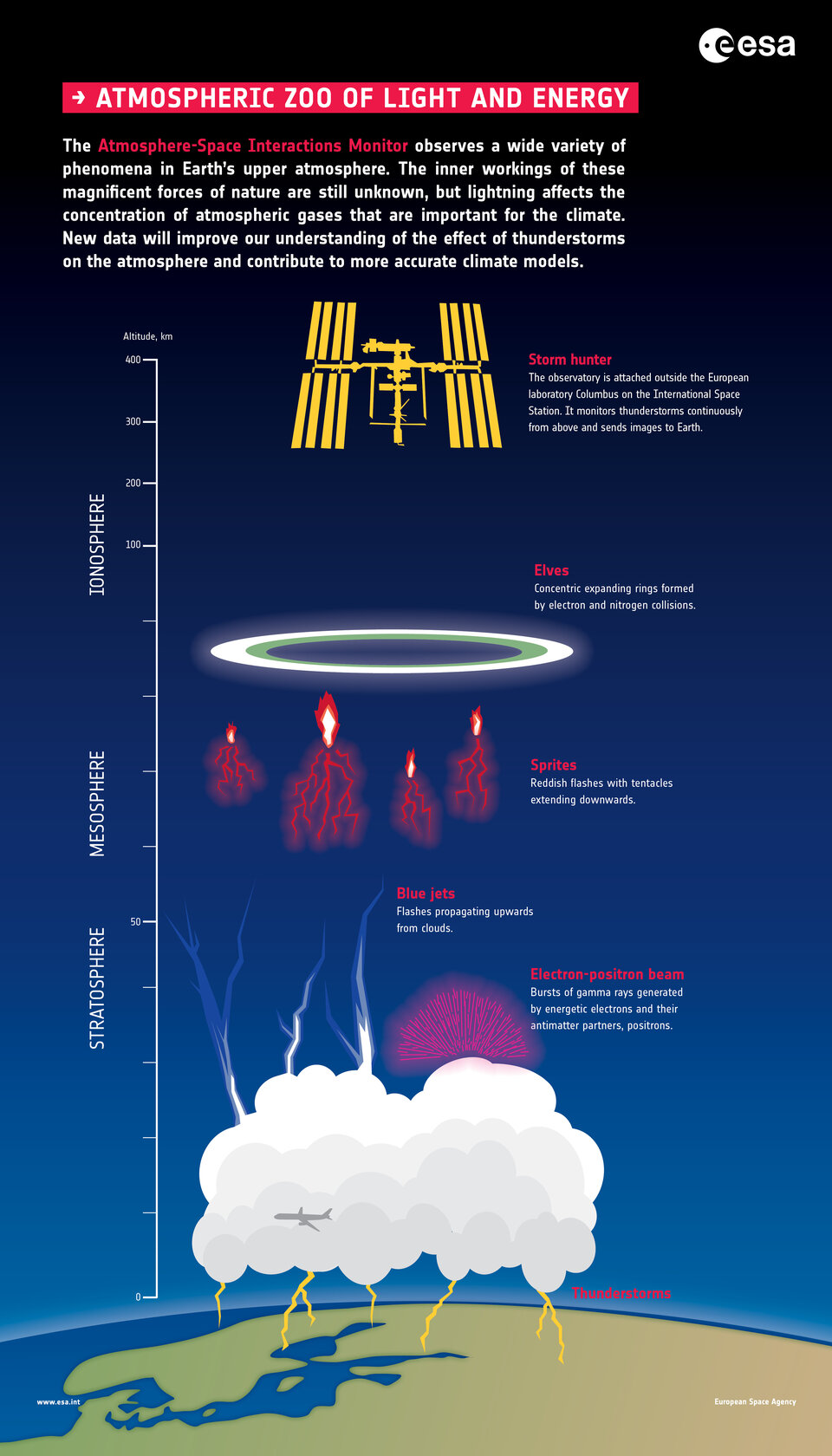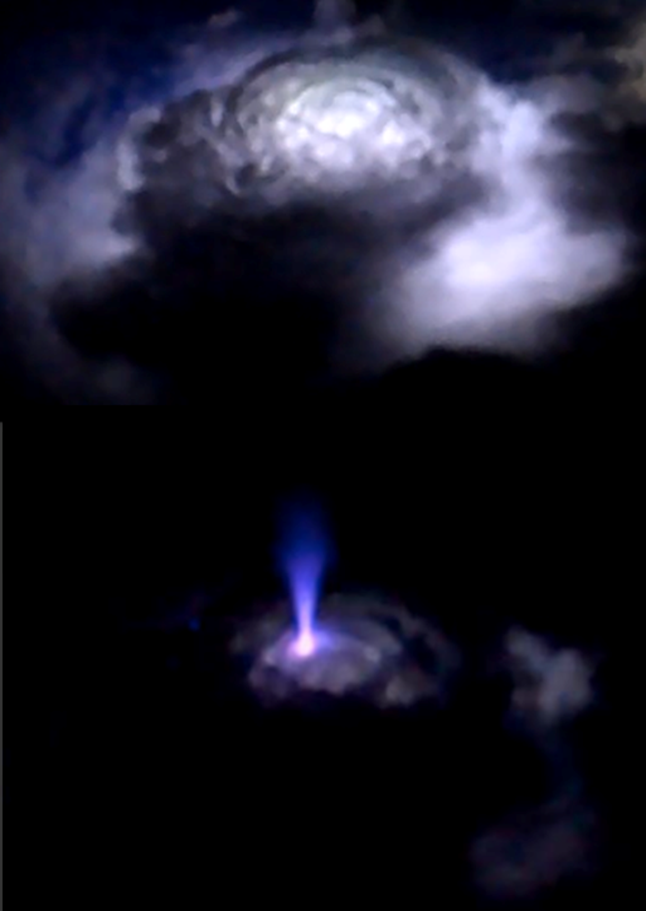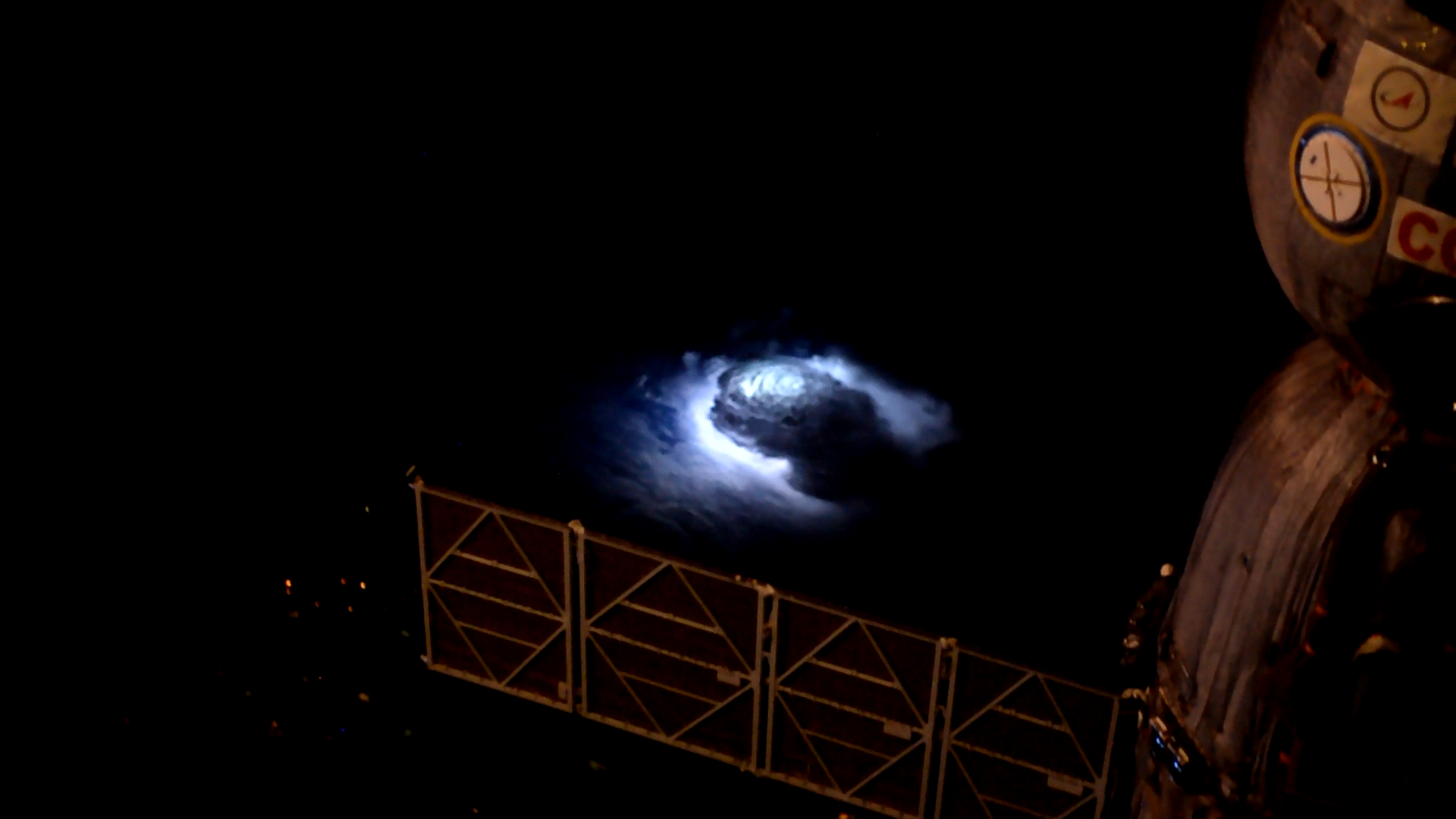Lightning in a camera – from above
ESA astronaut Andreas Mogensen will film thunderstorms and lightning shooting up towards space as part of the climate science of the Huginn mission.

We all know the flash of lightning followed by the sound of thunder but the physics behind the phenomena is not fully understood. The lightning we see occurs when clouds become electrically charged and discharge with the ground. But most lightning happens between clouds and never touches Earth. Some even occur above the clouds. With names such as ’blues jets’ that appear as upside-down lightning shooting up toward space or ‘red sprites’ that discharge in the mesosphere, these phenomena are called ‘transient luminous events’ (TLEs).
During Andreas’s first mission ‘iriss’ he captured a blue jet, a sprite and numerous blue discharges that appeared to be dancing atop thunderclouds.
During the Huginn mission, Andreas will use a Space Station camera with a device on top to take pictures of thunderstorms from the European-built Cupola windows. The experiment is led by Denmark's largest space research institute DTU Space, which also led the first experiment with Andreas called Thor in 2015.
A camera like our eyes

The additional camera on top is the Davis camera that uses 'event based' technology. Instead of taking images by collecting light through the camera shutter, the camera measures differences in light and uses that information to create an image. A person sitting perfectly still in a lit room would not be registered on a Davis camera as the light does not change. If the person starts moving, a Davis camera would record the change in light and produce a video.
This process is similar to how the human eye works, humans are more sensitive to change in vision and interpret a scene with much less information. The Davis technology can film up to a speed equivalent to 100 000 images per second needed to capture the TLEs that are over in the blink of an eye – as little as a millisecond.
“We are excited to have Andreas Mogensen look for thunderstorms with the new event camera. Last time he captured a blue jet, so we hope for even more pictures over his six months stay. This will be the first time an event camera is used to observe lightning events by an astronaut” said Olivier Chanrion, senior researcher at DTU Space.
Lightning climate
With the images that Andreas will take, scientists hope to gain more insight into how these phenomena develop and interact with the upper parts of the atmosphere and affect greenhouse gases such as ozone.
“The interaction between these lightning events and the upper atmosphere is not fully understood. Thanks to Thor we know there are more than what we expected. With Thor-Davis we have the opportunity to analyse and quantify their impact and to check to which extent they are associated with overshooting thunderclouds tops that inject greenhouse gases and aerosols in the stratosphere. We think it is important to better understand that in a changing climate,” said Olivier.
You can follow Andreas’s mission on his social media and the Huginn page.

Access the video


